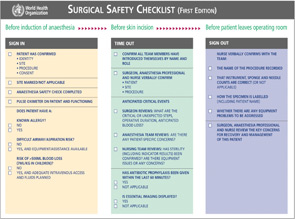In mid-February, the Joint Commission introduced a new online tool meant to help combat inconsistencies in the surgical time out process.



Does smoking prevent sinus surgery from making patients feel better? Over the years, evidence and expert opinion have varied on this topic. As a result, some surgeons refuse to provide endoscopic sinus surgery (ESS) for active smokers, while others will operate because they believe surgery improves quality of life.

Hemangiomas in pediatric patients pose a special challenge because the proper way to proceed might not be clear immediately, according to panelists at the Triological Society Combined Sections Meeting.
What are the risk factors for the frequency and severity of bleeding episodes following tonsillectomy (TE), tonsillotomy (TO) or adenoidectomy (AE)? Background: TE, TO and AE are the most frequent surgeries […]
Are chronic rhinosinusitis (CRS)-specific health-related quality of life (HRQOL) outcomes affected by concurrent septoplasty performed during endoscopic sinus surgery (ESS) for medically refractory CRS? Background: Septoplasty is commonly performed during ESS. […]
Does concomitant mastoidectomy improve outcomes for patients undergoing repair of tympanic membrane perforations? Background: Controversy currently exists regarding the appropriate treatment of tympanic membrane perforations resulting from chronic suppurative otitis media […]
What are important parameters that should be considered in the treatment decisions for vestibular schwannomas? Background: The advent of stereotactic radiosurgery and its widespread use during the past decade have led […]
What are the safety, toxicity and oncologic outcomes of patients undergoing transoral robotic surgery (TORS), neck dissection and adjuvant therapy for advanced oropharyngeal squamous cell carcinoma (AOC)? Background: Most patients with […]
Are surgical outcomes better for intraoral removal of proximal submandibular stones or traditional submandibular gland (SMG) resection? Background: Salivary stones, the most common cause of salivary ductal obstruction, usually occur in […]
What are the long-term outcomes of patients with unilateral vocal fold paralysis (UVFP) who are treated with injection laryngoplasty (IL)? Background: IL, a temporary intervention for UVFP, is often performed in […]